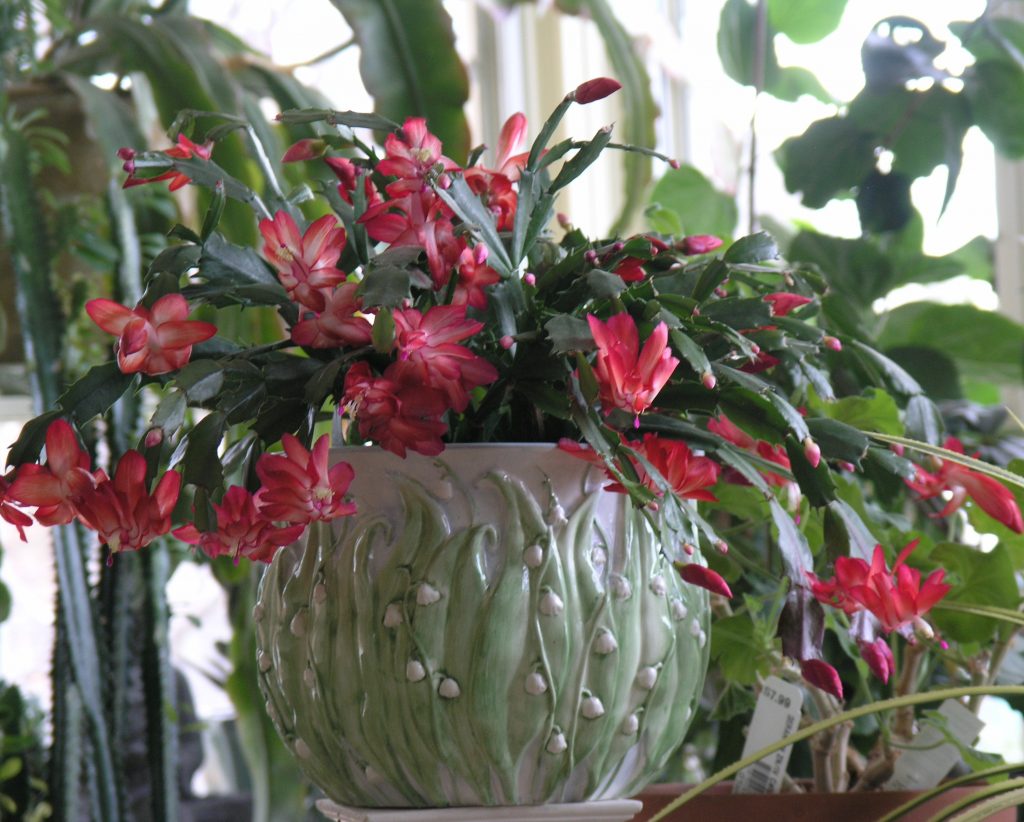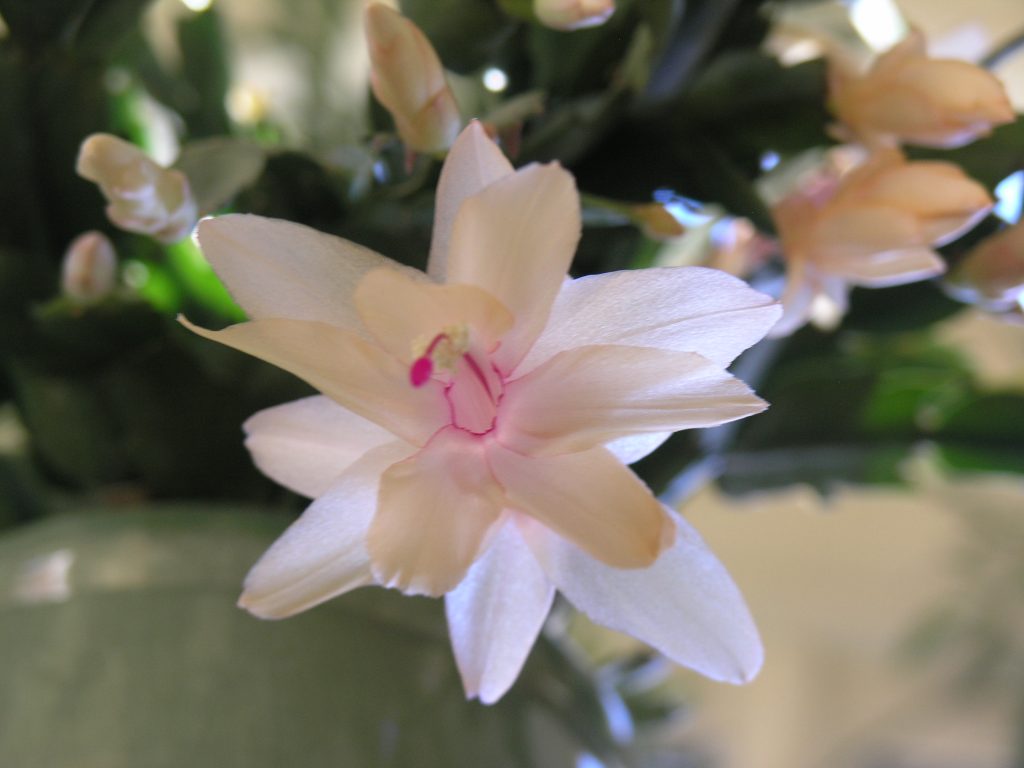Holiday Cacti
- 2020-01-07
- By danibash
- Posted in The Garden Buzz
By Paula Szilard, Colorado Master Gardener
If they weren’t so common, we’d all be transfixed by these stunning plants. Thanksgiving and Christmas cacti are rainforest cacti from Brazil in the genus Schlumbergera. These plants are virtually identical, except Thanksgiving cacti bloom earlier. The Easter cactuses are distinct and fall into two different genera. There are over 200 cultivars of holiday cacti in all permutations of pink, purple, red, peach, coral and white and even yellow.

Schlumbergeras have flattened segmented stems (phylloclades) resembling leaves, most with zigzag edges and prominent midribs, and some with rounded edges. They are cacti, of course, as evidenced by their areoles, areas in the notches of leaf margins where the spines, branches and flowers emerge. Schlumbergeras have barely visible bristles instead of spines.
Basic Care
If you are the recipient of one of these long-lived beauties, consistent good care can eventually turn it into a family heirloom. Care of these plants is straightforward. They do best when potted up in an all-purpose peat-based mix with a pH of 5.8-6.2 rather than a cactus mix. It’s ok to mix in a little cactus mix to enhance drainage. Do keep in mind that these are rainforest cacti and the stem segments (phylloclades) essentially function as leaves, so they need a medium that retains moisture. That said, the plant is still a succulent and when in doubt, less is more. Fertilizing is best done with a balanced, water-soluble fertilizer with an NPK ratio of roughly 20-20-20 and micronutrients. Many people fertilize as little as 2-4 times a year. They avoid fertilizer build-up in the growing medium by periodically leaching out the fertilizer with water.
Place your plant in very bright shade or an east-facing window. Plants that get too much sun may develop yellowish green leaves. Water your holiday cactus well from spring to the conclusion of its flowering period, keeping the mix consistently moist, but not soggy. This is the time of year when the stems grow most actively and need more water. After it blooms ease up a bit, watering only enough to keep the medium from drying out until early spring, when you again resume regular watering. Keep the mix moist, but never allow the pot to stand in water.

Blooming and Reblooming
Schlumbergeras bloom either in response to day length or cool temperatures. More specifically, when room temperatures are 60° F or above, they bloom in response to the short days and long nights of fall and winter. At these temperatures they need 12 ½ to 14-hour days and long nights without even a smidgeon of artificial light. Alternatively, when temperatures are 59° F or below, day length and exposure to artificial light are immaterial. The plants flower in response to temperature alone.
Bud or blossom drop is occasionally a problem. Temperatures above 80° F or below 50° F can be the cause, as can overly dry or overly wet media, ethylene gas released by ripening fruit and gas fireplaces.
Horticulture Resources
- Garden Buzz Archives
- CSU Extension Resources
- Colorado Master Gardener Program
- Foothills to Plains Native Plant Master Program
- Native Bee Watch Community Science Program
- The Co-Hort Blog
- PlantTalk Colorado
- Soil Testing
- Plant Select
- Emerald Ash Borer
- Japanese Beetle
- Colorado State Forest Service
- Ask an Expert


